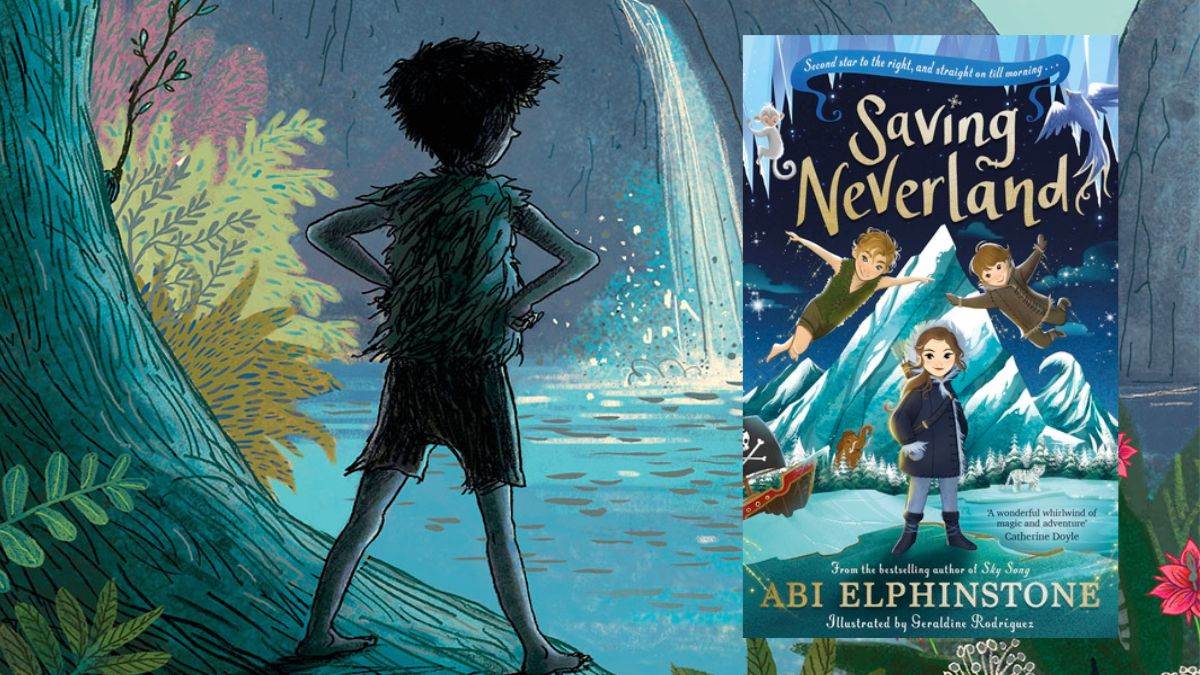5 of the best re-imagined classics
Published on: 10 January 2023
Abi Elphinstone, author of Saving Neverland, shares her thoughts on writing a sequel to a classic, and recommends some excellent other reimaginings.

I was asked recently how I’d found the process of writing a modern sequel to J.M. Barrie’s classic, Peter Pan. And I replied that it was a bit like moving house: mostly exciting but also totally overwhelming and fused with panic. I wanted to take this challenge on, though, for two reasons.
Why re-imagine a classic?
Firstly, the original Peter Pan is problematic. There is much to love, of course: the intoxicating wonder of flying over the River Thames and discovering Neverland; the nail-biting peril of battling pirates and outwitting strange beasts; the wit and bravado of Peter Pan himself; the joy and ache of growing up. But there are elements of the book, namely the sexism and racist stereotypes, that feel unsettling and inappropriate. In writing a modern sequel, I wanted to re-imagine a more inclusive, compassionate and contemporary story while staying true to the spirit of the original.
And my second reason for taking on this story was because I hoped re-imagining a much-loved literary character like Peter Pan might encourage reluctant readers to pick up a book for the first time. J.M. Barrie’s original Peter Pan has been adapted for stage and film again and again, and the spin-off experiences and merchandise are endless. You can buy Peter Pan crockery. You can, if you really want, wear Captain Hook knickers. Most, if not all, children have heard of Peter Pan, the boy who lives in Neverland with pirates and mermaids, and never grows up. And they like him. Because let’s be honest: make-believe and endless adventures are an infinitely more exciting concept than getting a job and filling out a tax return. So, right from the off, then, I’ve got a hook in for children (forgive the terrible pun) who might not usually pick up a book. I like to think of it as a sort of ‘second star to the right and straight on, via a bookshop, until morning’ situation…
Shaking up the story
I toyed with the idea of making Peter Pan grow up. I thought about getting him to learn humility and self-control. I considered the idea that he might, finally, understand what it means to belong to a family. But he proved too stubborn. And part of his charm, and power, lies in the way he cannot, and will not, be changed. So, in Saving Neverland, I’ve retained Peter’s bravado, I’ve kept his enthusiasm for danger and I’ve clung on to his reservations about family.
It is elsewhere that I shake things up. My Neverland is Neverland as children have never seen it before: stripped of racial stereotypes and misrepresented cultures and locked in the icy grip of a curse cast long ago by Captain Hook. Its rivers and waterfalls are frozen; its forests are full of frost; its mountains are covered in snow. Even the Neversea, an ocean made of the tears mothers shed when their children leave home, is sealed with ice. Now frostbears, snowtigers and icesharks patrol Neverland, draining it of magic as they await the return of the ghost of Captain Hook, as well as the ghosts of his swashbuckling pirate gang (cue Smee, Skylights, Barbecue, Blackheart plus a few additions like Lingering Pong, Gastronomy Belch and Ludicrous Tash).
Adding new characters
Even by Peter’s standards, he’s got a lot on his plate. And I wanted to make sure that the help he enlists from the Mainland came in the form of two children from today’s world, both of whom have agency and appeal, so that reluctant readers won over by Peter initially might be held in thrall by the wider Saving Neverland cast. Peter steals through the window of the Pennydrops’ house, where the Darling family used to live years ago. And there he meets ten-year-old Martha Pennydrop and her younger brother, Scruff.
Martha and Scruff are whisked off to Neverland and into the company of the Lost Kids and a woolly mammoth called Armageddon. And when Scruff is kidnapped, Martha must rediscover all the imagination, magic and belief she has buried deep inside herself for so long, to save her brother – and Neverland itself.
The original Peter Pan ends with Wendy’s daughter saying that Peter has asked her to go back to Neverland to do his spring-cleaning. But I wanted to write a story that would tell young girls they can go to Neverland to slay pirates, solve riddles and save the day – rather than just hopping across to do the housework. And as for Neverland, I hope it encourages children and adults to see the value of growing down as well as up because in growing down, we see the whole world – with all its thrills, possibilities and wonder – at our feet.
Five recommended re-imaginings of classics:
- The Sleeper and the Spindle by Neil Gaiman and Chris Riddell (a stunning reinvention and amalgamation of Snow White and Sleeping Beauty)
- The Little Matchgirl Strikes Back by Emma Carroll (a defiant retelling of The Little Matchgirl that champions the collective power of community and kindness)
- Rumaysa by Radiya Hafiza (a brilliantly funny and empowering retelling of Rapunzel)
- Miracle on Ebenezer Street by Cat Doyle (a clever and hugely entertaining spin on A Christmas Carol)
- A Dancer’s Dream by Katherine Woodfine (a beautiful and historically rich reimagining of The Nutcracker)

